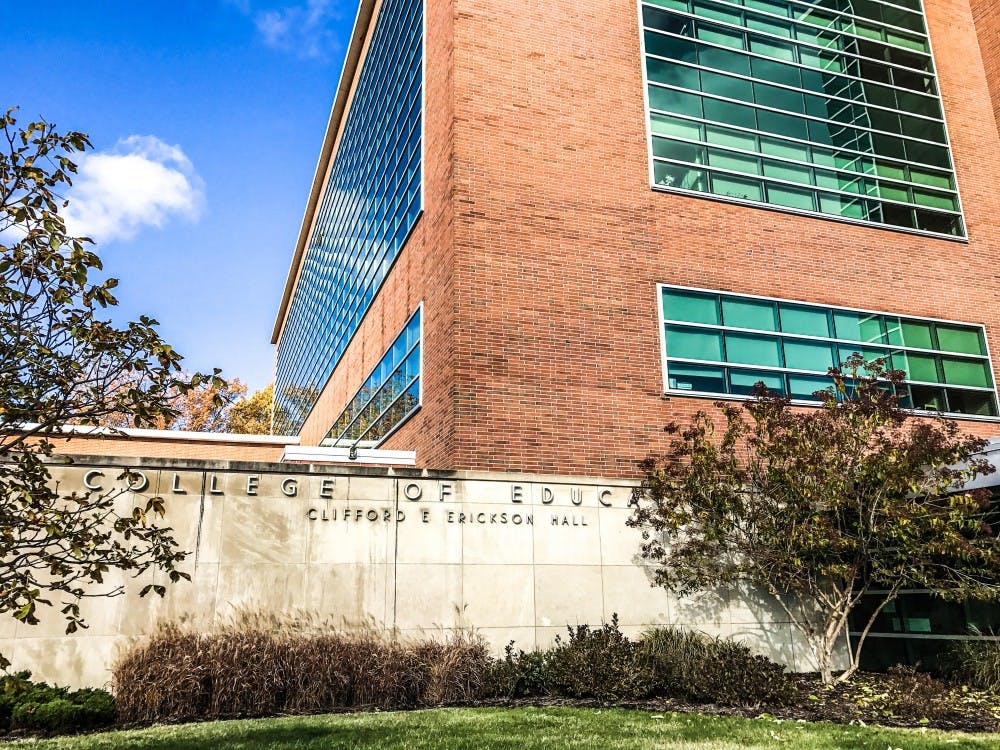Michigan State University’s Institute for Public Policy and Social Research and MSU’s Office of K-12 Outreach hosted a Gov. William G. Milliken Legacy Forum on school finance and education policy Tuesday.
The addressed topics that spanned from when Milliken was in office until now.
In the first of two panels, Matt Grossman, MSU director of Institute for Public Policy and Social Research, made remarks on behalf of Jim Phelps, education advisor to Milliken, regarding the beginnings of reform. He said that in a special message to the legislature, Milliken proposed legislation and constitutional amendments regarding financing schools. The most significant legislation shifted the funding in schools mainly to the state.
Milliken also proposed a statewide tax to replace the widely different local property levies. One of the most controversial elements was that state funding support lay teachers and non-public schools.
In 1994, Proposal A was approved by Michigan voters, which then began the reform of Michigan’s educational finance system.
Bill Rustem, chief staff advisor on environmental matters and former advisor to Milliken, said the focus shifted to maximizing the dollars available to each district by focusing on efficiency — or what members of the legislature viewed as efficiency.
Since that time, Michigan public schools have adopted a new charter school program, and Michigan has moved to Schools of Choice. There has been the establishment of series of tests, including the MEAP test, the No Child Left Behind test and reforms in teachers’ unions and employers, including in 2012, when Michigan became a Right to Work state. Most importantly, in terms of equity, there has been a new commitment to early childhood education for four-year-olds and helping to get children ready to attend school.
“Proposal A had two main goals; one was to lower property taxes, and the other was to lower the gap in the revenue between the high and low districts,” David Arsen, MSU professor of education policy and K-12 educational administration, said. “And it largely accomplished both of those goals.”
Eventually, the foundation’s adjustment, which Proposal A suggested, significantly narrowed the gap between Michigan’s high and low revenue districts. The funding also followed the student.
“That was essential for the development of Michigan school choice policies,” Arsen said. “However, Proposal A never got around to funding of facilities. Funding is totally decentralized. It’s all based on local property wealth without any state aid … leading to terrific inequalities in the ability of funding facilities.”
In the second panel, Doug Smith, education and civil rights advisor in Milliken's administration, commented on educational facilities regarding challenges moving forward.
“Facilities have to be safe havens,” Smith said. “Online learning will play a much more important role in education than ever before, so iPads, or home computers, or access to the internet, become part of the issue of facilities. … The technology gives us the opportunity ... to individualize education in our schools. We now have computers that allow us to do that, and we need to meet that challenge.”
Throughout the last 20 years, Terah Venzant Chambers, associate dean for equity and inclusion and professor in the MSU Department of Educational Administration, MSU College of Education, has done her research in understanding contemporary locations of desegregation policy.
Chambers' research is titled, “It All Just Kind of Falls Together: A Retrospective on Educational Equity in Michigan.” In a qualitative project that Chambers did almost 20 years ago with Black high school students and tracked math and English classes of students who were in different level classes, including a credit recovery program, she found an essential set of findings related to stratification that began in elementary school and how that was exacerbated as the students got older.
“By high school, it would have been incredibly difficult for those Black students to break out of the tracks that they were in,” Chambers said. Chambers’ contribution was around institutional factors or school factors that contributed to that separation and stratification.
Another key finding that Chambers noted was tying this contemporary issue with school tracking within a broader, historical narrative around desegregation.
“I was interested in the way that schools contribute to these tracking decisions and the implications for students, ... and the experiences shared by the other students suggested there was a larger story that needed to be told around the students in the advances classes, not knowing other Black students in the school or a lack of connection with Black students — these types of things, ” Chambers said.
This led Chambers to another project that explored an additional layer that went beyond tracking. It was about the stratification and implications of their academic success. Chambers' research set the stage for the move to Michigan as this project took off.
While in Michigan, Chambers saw that Proposal A did usher in an opportunity to desegregate, although that was not the primary objective of the policy. From 1970 to 1995, there is a shift in isolation where suburban districts are less isolated, white and Detroit becoming more isolated, Black. There was another major shift in 2005 and 2013.
“As I make the connection across the tracking research in racial opportunity cross-work and this desegregation work, I’m really looking at how this unintended desegregation that’s happening in suburban schools ... is potentially creating challenges for students of color,” Chambers said. “Around the racial opportunity cross-work and that unintended nature of the desegregation really being a feature of something we need to focus on. What links all of these projects, is it does look like, from afar, all of these things 'Just Kind of Fall Together' with the findings across these projects that really suggest a more complicated narrative.”
Support student media!
Please consider donating to The State News and help fund the future of journalism.
Discussion
Share and discuss “ Gov. William G. Milliken Legacy Forum addresses topics facing Michigan K-12 education system” on social media.






